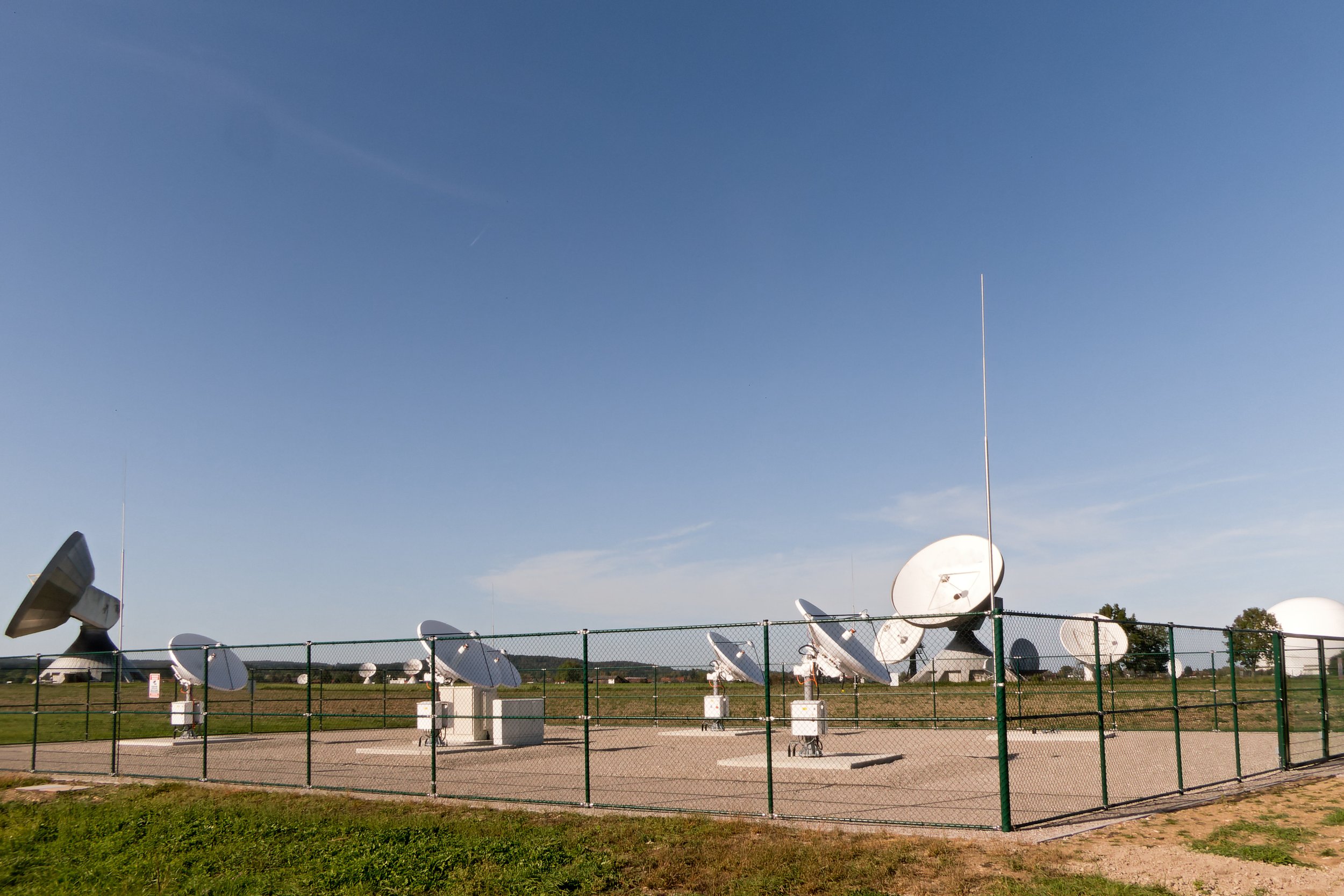Is the Ground Segment Keeping Up with LEO?
By Joakim Espeland, CEO, Quadsat
The launch of mega constellations into low earth orbit (LEO) is undoubtedly responding to a direct need within the satellite industry. There is unprecedented demand for seamless and wide-reaching connectivity and many satellite operators are viewing multi-orbital solutions as the answer to great service delivery to their users. The traditional and inhibitive perception of satellites – that of poor latency and high costs – is now being challenged, with LEO and MEO delivering fresh benefits to attract users to satellite. With satellites operating at a lower altitude, LEO delivers low latency and geographically wide reaching coverage, making it a great resource for many industries. By pairing this with GEO’s high bandwidth capabilities, the satellite industry is set to transform itself through providing multi-orbital solutions.
The main change that the industry is facing is the sheer change in numbers within orbit. For years, satellite communications have been focused around GEO and, as of July 2023, there were 580 active satellites in this orbit. This provides a stark contrast to the number of satellites within LEO; ABI Research forecasts that up to 2,400 LEO satellites will be launched this year, adding to the more than 8,000 already in orbit. With the prediction that the number of satellites in LEO could top 25,000 within the next decade, the industry is facing many technological challenges when considering service delivery. Many of the discussions we hear address difficulties in-orbit, with Space Traffic Management taking focus. Undeniably, managing sustainability in space is imperative, however there has not been as much discussion surrounding RF and the ground segment.
The numbers prove that we are facing an extraordinary challenge, and this leads us to face an important question: is the ground segment operationally ready for LEO?
Ground infrastructure and RF
The ground segment has long-been a challenge within satcom; if RF signals are not being received correctly, then services are being disrupted. Customers need seamless coverage, and RF interference (RFI) has been a burden to satellite operators for decades. Within GEO, most RFI issues have stemmed from a few common problems. Faulty and poor-quality equipment, attenuation, and the mispointing of antennas have been common causes of RFI within GEO. A significant move within the ground segment has been the shift to promoting industry standardised parabolic antennas. Many satellite operators have adopted SOMAP (Set of Minimum Antenna Performance) requirements within their infrastructures, with industry-agreed standards providing operators with confirmation that equipment is of a good quality, can meet their operational requirements, and not likely to cause disruption to signals. Widespread adoption of SOMAP has the potential to transform satcom networks, with operators identifying improvements in performance.
We are now seeing the rollout of new antenna technologies at the ground segment which push the industry into a new realm of RF management. Valour Consultancy released a study on The Future of Flat Panel Antennas (2023) which suggests that vendors will ship approximately 100,000 units between 2021 and 2030. The report’s author, Daniel Welch, suggests, ‘“There’s a fundamental link between next generation flat panel antennas and LEO and MEO constellations, with the former required to effectively track satellites over the horizon and to truly realise the benefits of multi-orbit connectivity.’ There are many FPAs already in operation, and it is clear that these numbers are set to increase rapidly as we see more customers opting for the benefits offered by LEO.
Unique challenges at the LEO ground segment
It is important to understand the reason behind the need for the ground infrastructure upgrade within LEO. Firstly, it is important to note that LEO will primarily utilise Ku and Ka bands. This is due to the use of smaller antennas commonly found within these networks as Ku and Ka bands provide greater throughput. Alongside greater throughput comes greater directivity, meaning that the error for margin is much smaller and therefore the risk of RFI is greater. Ensuring accuracy is made even more difficult - and simultaneously more important - by the fact that LEO is going to require a large number of teleports and gateways due to its scale. This combination of factors creates a very challenging environment to manage, with accuracy needing to be a priority within networks.
This accuracy is magnified even further when considering the other, and arguably most significant, challenge within LEO: its whole network is dynamic. With satellites travelling at a lower altitude, they will need to contact multiple teleports around the world in order to remain in range. This continuous switching between teleports requires sophisticated tracking capabilities as the antenna must be able to track satellites across the field of view, as well as carrying out smooth handovers with other ground stations.
Fundamentally, the tracking capability of an antenna is key to the success of LEO, and FPAs’ characteristics lend themselves to the job. Through utilising phased array technology, FPAs can track satellites whilst remaining stationary themselves. They can track multiple satellites at once making them an obvious choice to manage the complex orbital networks within LEO. However, FPAs are not limited to LEO; some of the latest iterations offer multi-band and multi-orbit capabilities. Which leads us to ask: what will this look like operationally?
Making dynamic networks work
Many satellite operators are treating LEO as only a part of a much wider, multi-orbit network. By integrating LEO, MEO, GEO, and even 5G services, satellite operators can leverage the strengths of each orbit to deliver tailored, feature-rich services to their customers. This is hugely variable; different operators are developing different combinations of services from different orbits, depending on user needs. In addition to this, the industry is also looking toward multi-band infrastructure, with satellites not only operating in different orbits, but different frequency bands. A multi-orbit, multi-band network design offers enhanced resilience, protecting operators from disruption and allowing them to offer a more diverse service.
Delivering this incredibly complex network requires extensive infrastructure at the teleport. Ground segments will need the capacity to simultaneously lock on to two satellites in different orbits and/or bands, and seamlessly coordinate communications. Technologically, this requires optical beamforming and frequency management capabilities that can handle diverse signal characteristics, hence why FPAs are being looked at as the solution.
Antenna design plays a critical role in enabling the success of cross-orbit networks. As we have learnt through years of experience with GEO and parabolic antennas, high-quality design paired with thorough testing regimes are critical in managing antenna performance. Testing systems can gather data on FPAs to provide insight into antenna performance, however, this is mainly being utilised by manufacturers to gather specific data. Unlike parabolic antennas, the industry does not yet have defined and standardised parameters for testing FPAs. This means that there are no defined requirements for what needs to be tested, nor what results should be expected and therefore the interpretation of data is dependent on operator criteria. Without this industry-wide approach, operators run the risk of working within silos, potentially allowing for differing qualities within performance. From an antenna manufacturers’ perspective, this makes it challenging to create FPA technology which meets the performance criteria for satellite operators.
Standardised, industry-defined testing parameters will enable a smooth rollout of FPAs within satcom, avoiding the issues faced by parabolic antennas in decades gone by caused by poor quality equipment and testing regimes. Type approvals have long been used within the parabolic antenna industry to ensure that antennas are performing to the standard required by the industry, allowing manufacturers to deliver products which operators want. FPA testing regimes must be prioritised when considering rollout, with in-situ likely to become the only viable option when analysing antenna performance, as it reflects environmental factors which can impact antenna performance. To deliver this testing, technology will simulate a virtual orbital pass in order to gain a true understanding of the antenna’s performance within its own setting. However, it is critical that the industry defines its expectations; without a standardised approach, there is a risk of mismanagement which could have consequences for other spectrum users.
A cohesive approach to the ground
It is no exaggeration to state that the ground segment is going through a huge transformation in order to respond to in-orbit pressures. The rollout of FPAs to enable LEO is in full swing, with the numbers set to continue to rise. With high numbers of gateways and dynamic systems, accuracy is going to be paramount in ensuring smooth operations. Equipment needs to be sophisticated and there will need to be numerous monitoring, management, and mitigation tools to enable smooth service provision. In-situ test methods will be able to enable authentic test conditions which can mimic movement and assess antenna performance in relation to tracking and switching. However, it is critical that the industry proceeds and agrees upon defined testing-parameters to enable operators to establish first-rate type approvals and testing regimes on equipment. Without this, data interpretation could vary at the detriment of performance, resulting in inefficient throughput and potentially disrupted services. We have the tools and the procedures – now we need defined boundaries to interpret data within.
It is an exciting time for the industry. It will deliver services which will transform how satellite communications are viewed and become available to entire new markets. As this rollout continues, we as an industry must place importance on getting the rollout of FPAs right. Their usage is going to be widespread, and now is the time to establish how we need them to perform, and how we can monitor this. The industry will only truly maximise its own potential when the ground segment is optimised, and antenna testing has a crucial role to play.


